MSIS Capstone -- Oversized Collection, St. Edward's University Archives
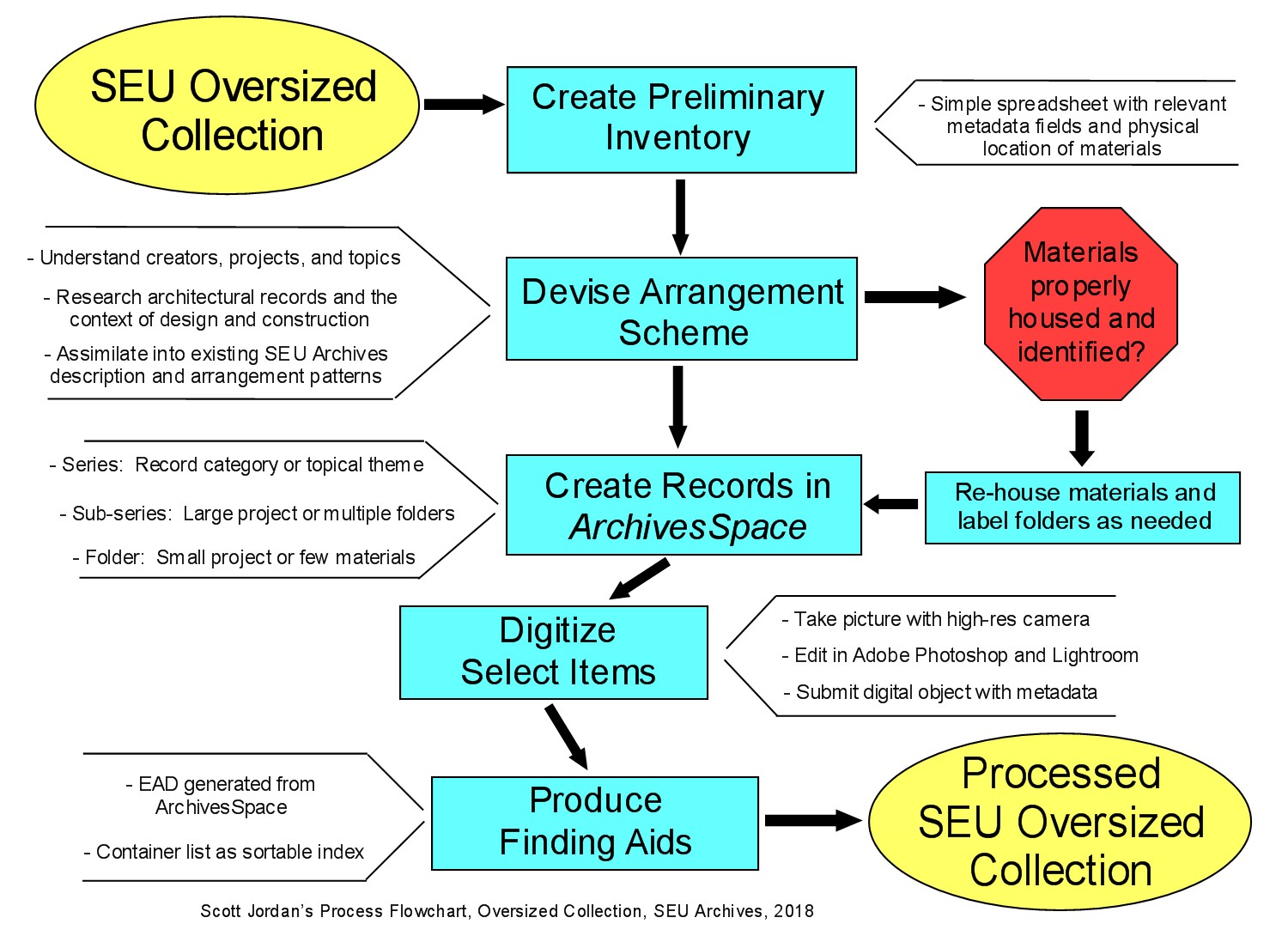 During the spring of 2018, I made a preliminary inventory of all the items in the Oversized Collection at St. Edward's University Archives, captured relevant and useful metadata, created authority-controlled agents and subjects pertaining to the collection, devised an arrangement scheme, and created new records for the archival materials in ArchivesSpace. The DACS-compliant finding aid also included an abstract, scope and contents note, arrangement, processing note, extents, material types, links to agents and subjects, and other information describing the collection. The inventory and EAD finding aid comprehensively and accurately identified the files and their creators, enriched the description of the contents, and brought an improved sense of order to the collection. Items were re-foldered, folders were identified more clearly where needed, and flat file drawers were given new labels. A few select items were digitized and uploaded to an Omeka digital repository site.
During the spring of 2018, I made a preliminary inventory of all the items in the Oversized Collection at St. Edward's University Archives, captured relevant and useful metadata, created authority-controlled agents and subjects pertaining to the collection, devised an arrangement scheme, and created new records for the archival materials in ArchivesSpace. The DACS-compliant finding aid also included an abstract, scope and contents note, arrangement, processing note, extents, material types, links to agents and subjects, and other information describing the collection. The inventory and EAD finding aid comprehensively and accurately identified the files and their creators, enriched the description of the contents, and brought an improved sense of order to the collection. Items were re-foldered, folders were identified more clearly where needed, and flat file drawers were given new labels. A few select items were digitized and uploaded to an Omeka digital repository site.
IC2 Institute Records
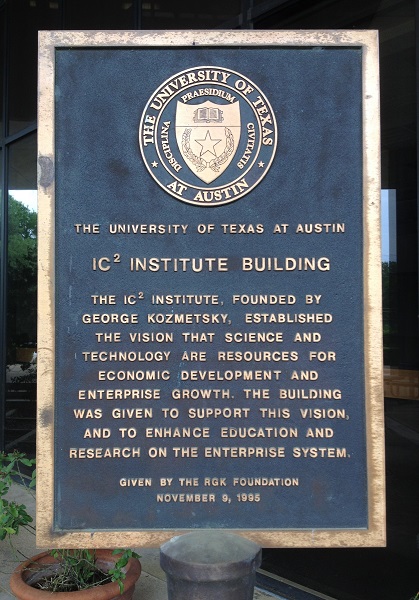 As an archives intern during the fall of 2017, I processed some materials for the IC2 Institute, a research arm of the University of Texas involved with technology commercialization programs, entrepreneurial education, and economic developent studies. These records are extensive (approximately 300 boxes overall) and include correspondence, memos, conference schedules and travel itineraries, published and unpublished articles by IC2 fellows, book drafts and publishing correspondence, annual reports, research materials and technology publications, international program materials, board of directors and fellows meeting minutes and agendas, technology and econometric assessments, and technology product descriptions from various start-up businesses. I revised the finding aid to reflect DACS standards and included sections for collection summary, administrative history, scope and contents, processing information, series arrangement, conditions governing access and use, preferred citations, and other elements. I accessioned about 100 boxes into the collection, labeled boxes and folders, created new series, and described new materials by file, topic, event, creator, or program. Strenghts of the collection focus on technology commercialization, regional and international economic development assessments, global initiatives and partnerships, emerging technologies, fellows research, and the Austin Technology Incubator.
As an archives intern during the fall of 2017, I processed some materials for the IC2 Institute, a research arm of the University of Texas involved with technology commercialization programs, entrepreneurial education, and economic developent studies. These records are extensive (approximately 300 boxes overall) and include correspondence, memos, conference schedules and travel itineraries, published and unpublished articles by IC2 fellows, book drafts and publishing correspondence, annual reports, research materials and technology publications, international program materials, board of directors and fellows meeting minutes and agendas, technology and econometric assessments, and technology product descriptions from various start-up businesses. I revised the finding aid to reflect DACS standards and included sections for collection summary, administrative history, scope and contents, processing information, series arrangement, conditions governing access and use, preferred citations, and other elements. I accessioned about 100 boxes into the collection, labeled boxes and folders, created new series, and described new materials by file, topic, event, creator, or program. Strenghts of the collection focus on technology commercialization, regional and international economic development assessments, global initiatives and partnerships, emerging technologies, fellows research, and the Austin Technology Incubator.
UT Women's Golf Collection
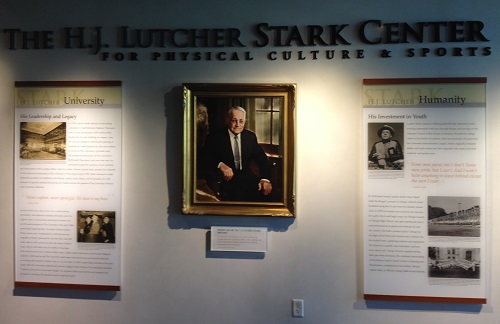 Two graduate classmates and I processed the UT-Austin Media Relations Women's Golf Collection at the Stark Center for Physical Culture and Sports during the fall of 2017. First we conducted a preliminary survey of the collection and drafted a processing plan. We then sorted through the materials and arranged the collection into three series: season binders, publicity materials, and newspaper clippings, with a fourth series added later for electronic media. Our next task was to create and label folders, remove staples and metal binders, and re-house the materials into archival-quality storage boxes. We concluded the project with an EAD finding aid complete with administrative history, scope and contents, conditions governing use and access, names and subject terms, and inventory of the contents.
Two graduate classmates and I processed the UT-Austin Media Relations Women's Golf Collection at the Stark Center for Physical Culture and Sports during the fall of 2017. First we conducted a preliminary survey of the collection and drafted a processing plan. We then sorted through the materials and arranged the collection into three series: season binders, publicity materials, and newspaper clippings, with a fourth series added later for electronic media. Our next task was to create and label folders, remove staples and metal binders, and re-house the materials into archival-quality storage boxes. We concluded the project with an EAD finding aid complete with administrative history, scope and contents, conditions governing use and access, names and subject terms, and inventory of the contents.
DIRKS Assessment
I participated with several other graduate students in a Developing and Implementing a Record Keeping System (DIRKS) project. The purpose was to assess the electronic records system of a fellow classmate, identify key functions and transactions, develop a business case and classify existing records accordingly, create a full records retention schedule, describe and resolve problem areas, and implement strategies for effective records management. Our assessments and reports were compliant with ISO and InterPARES standards and guidelines, ensuring that records were authentic, reliable, complete, accessible, secure, and compliant with legal, fiscal, and social requirements.
The Papers of Bishop William White
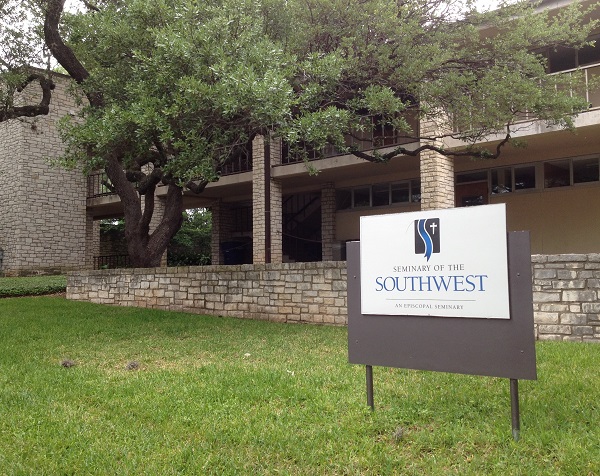 I served a project internship in 2017 processing the Papers of William White at the Archives of the Episcopal Church headquartered in Austin, Texas. William White (1748-1836) was the Bishop of Pennsylvania and is regarded as the founder of the Protestant Episcopal Church in the United State of America. His papers, most of which date from the late eighteenth and early nineteeth centuries, include original handwritten correspondence to clergymen, officials, friends, and family members, unpublished manuscripts and sermons, printed photographic materials, family estate records, and the papers of his descendants. The materials, gathered from various sources, were given a new arrangement and described at the item level. The collection consists of about 3 cubic feet and is in reasonably good conditition considering the age of the documents. The finding aid was written according to DACS standards and repository guidelines and exists in hard-copy form.
I served a project internship in 2017 processing the Papers of William White at the Archives of the Episcopal Church headquartered in Austin, Texas. William White (1748-1836) was the Bishop of Pennsylvania and is regarded as the founder of the Protestant Episcopal Church in the United State of America. His papers, most of which date from the late eighteenth and early nineteeth centuries, include original handwritten correspondence to clergymen, officials, friends, and family members, unpublished manuscripts and sermons, printed photographic materials, family estate records, and the papers of his descendants. The materials, gathered from various sources, were given a new arrangement and described at the item level. The collection consists of about 3 cubic feet and is in reasonably good conditition considering the age of the documents. The finding aid was written according to DACS standards and repository guidelines and exists in hard-copy form.
3D Printing -- Antikythera Mechanism Replica
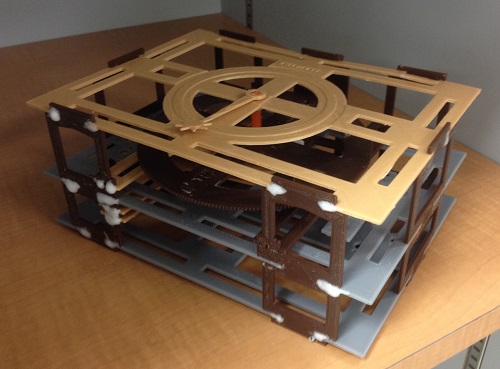 In 2017 I was a team member in a digital humanities class who contructed a replica 3D model of the Antikythera Mechanism, an ancient Greek mechanical calendar ("the world's first computer") discovered around 1900 from an Aegean shipwreck. We gathered research on the construction, function, cultural context, and practical uses of the mechanism and located datasets in the form of diagrams, descriptions of parts, assembly configurations, and three-dimensional STL object files. We loaded the digital files using Cura 3D software into a Lulzbot TAZ6 3D printer, set the printer specifications, and then printed each part. Once we had all the parts completed, we then reconstructed the model. In a few places we had to glue the pieces together, but it all came together nicely. We presented our findings and methodology to the class on topic research and data sources, Cura software, and 3D printer hardware.
In 2017 I was a team member in a digital humanities class who contructed a replica 3D model of the Antikythera Mechanism, an ancient Greek mechanical calendar ("the world's first computer") discovered around 1900 from an Aegean shipwreck. We gathered research on the construction, function, cultural context, and practical uses of the mechanism and located datasets in the form of diagrams, descriptions of parts, assembly configurations, and three-dimensional STL object files. We loaded the digital files using Cura 3D software into a Lulzbot TAZ6 3D printer, set the printer specifications, and then printed each part. Once we had all the parts completed, we then reconstructed the model. In a few places we had to glue the pieces together, but it all came together nicely. We presented our findings and methodology to the class on topic research and data sources, Cura software, and 3D printer hardware.
Audio Production and Preservation
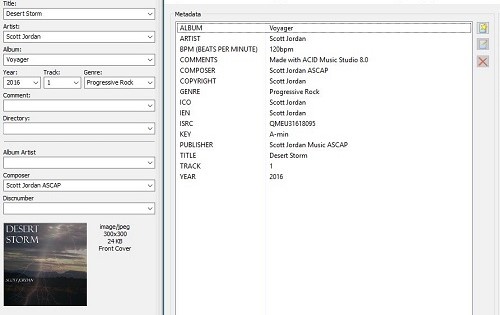 As a songwriter and recording artist of instrumental music, I understand the value of documenting and preserving my audio creations for posterity and as good business practice. Recordings of individual tracks are arranged and filed in digital folders denoting categories of sound and instrumentation, along with separate folders for master tapes and final recordings. Songs are digitally mixed and rendered into various demo, commercially-distributed, non-proprietary, and high-bitrate formats. I typically use Mp3Tag to encode the metadata, which includes song title, album, composer, producer, copyright owner, key, beats per minute, cover art, and other elements worth preserving. I also maintain metadata on spreadsheets to keep track of unique ISRC numbers, recording dates, song durations, and other vital information.
As a songwriter and recording artist of instrumental music, I understand the value of documenting and preserving my audio creations for posterity and as good business practice. Recordings of individual tracks are arranged and filed in digital folders denoting categories of sound and instrumentation, along with separate folders for master tapes and final recordings. Songs are digitally mixed and rendered into various demo, commercially-distributed, non-proprietary, and high-bitrate formats. I typically use Mp3Tag to encode the metadata, which includes song title, album, composer, producer, copyright owner, key, beats per minute, cover art, and other elements worth preserving. I also maintain metadata on spreadsheets to keep track of unique ISRC numbers, recording dates, song durations, and other vital information.
Oral History Project Exhibit
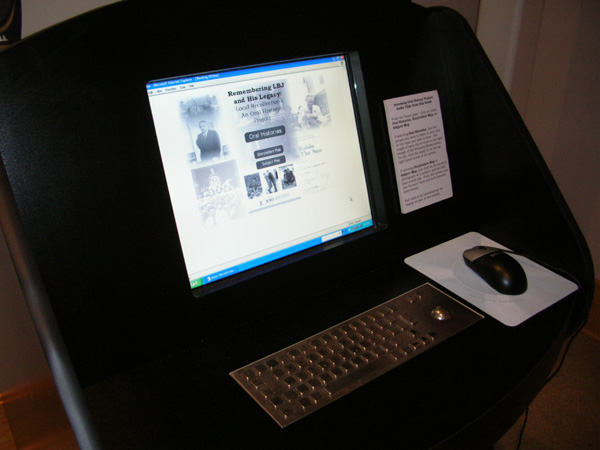 The Lyndon B. Johnson Museum of San Marcos collaborated with Texas State University to produce Remembering LBJ and His Legacy: Local Recollections -- An Oral History Project for the LBJ Centennial Celebration during the academic year of 2008-2009. Wimberly (Texas) historian Barbara Thibodeaux interviewed forty eight San Marcos area residents, community leaders, Texas State alumni, and friends of the late president. As the museum's director, I designed and installed the exhibit in the museum gallery, which included oral history excerpts, photographs, and documents and an interactive kiosk for listening to audio recordings of the oral histories. I trimmed, edited, and converted the audio files, built the software and digital repository entirely with HTML and CSS code (and maybe a little bit of JavaScript), and assembled the digital and hardware components into the kiosk. Funding for the oral history project was made possible in part by a HumanitiesTexas grant.
The Lyndon B. Johnson Museum of San Marcos collaborated with Texas State University to produce Remembering LBJ and His Legacy: Local Recollections -- An Oral History Project for the LBJ Centennial Celebration during the academic year of 2008-2009. Wimberly (Texas) historian Barbara Thibodeaux interviewed forty eight San Marcos area residents, community leaders, Texas State alumni, and friends of the late president. As the museum's director, I designed and installed the exhibit in the museum gallery, which included oral history excerpts, photographs, and documents and an interactive kiosk for listening to audio recordings of the oral histories. I trimmed, edited, and converted the audio files, built the software and digital repository entirely with HTML and CSS code (and maybe a little bit of JavaScript), and assembled the digital and hardware components into the kiosk. Funding for the oral history project was made possible in part by a HumanitiesTexas grant.
PastPerfect Implementation and Collections Management
As museum director of the LBJ Museum in San Marcos, I assessed our collections management system and determined that the best option was PastPerfect museum software. Using our existing database record, first I gave each acquisition a straight-forward assession number (modeled after the year and order in which the material was received) and noted it in the registrar and donor records. Then I began to process all the collections, adding a sequential number to each accession number for files or items. Metadata was assigned to indicate provenance or creator, dates, titles, format, extent, spatial or temporal coverage, access and use rights, scope and contents, and other properties. The museum collections included artifacts, photographs, manuscripts, books, maps and drawings, audio-visual materials, and newspapers. The finding aids resided in the database, although a few were printed out.
Guide to Austin Parks and Recreation
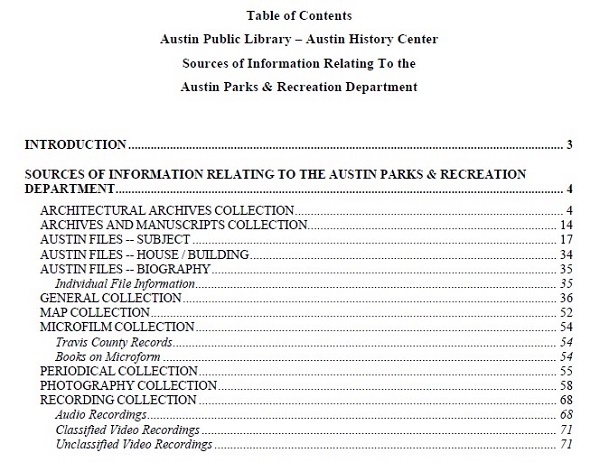 One of my projects at the Austin History Center was co-author and researcher for a guide to resources pertaining to the Austin (Tex.) Parks and Recreation Department. This entailed familiarizing myself with the collections at the repository and identifying any significant sources whose subject matter or provenance were related to PARD. The project conveyed a wealth of materials from the architectural archives, manuscripts, Austin Files, the general collection of books and unpublished monographs, microfilm, periodicals, photographs, and audio-visual recordings. I learned how a topic is represented and expressed through many formats and mediums and how this can lead to an enrichment of knowledge and understanding of social activities, recreation, city services, and infrastructure. While at the Austin History Center, I also processed several collections and created or edited EAD finding aids using XML mark-up language.
One of my projects at the Austin History Center was co-author and researcher for a guide to resources pertaining to the Austin (Tex.) Parks and Recreation Department. This entailed familiarizing myself with the collections at the repository and identifying any significant sources whose subject matter or provenance were related to PARD. The project conveyed a wealth of materials from the architectural archives, manuscripts, Austin Files, the general collection of books and unpublished monographs, microfilm, periodicals, photographs, and audio-visual recordings. I learned how a topic is represented and expressed through many formats and mediums and how this can lead to an enrichment of knowledge and understanding of social activities, recreation, city services, and infrastructure. While at the Austin History Center, I also processed several collections and created or edited EAD finding aids using XML mark-up language.